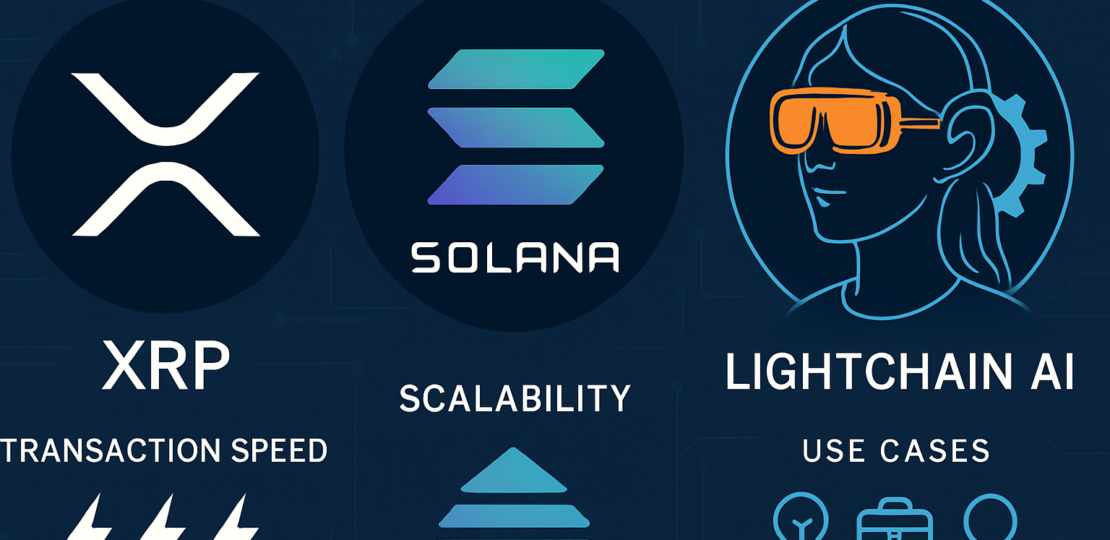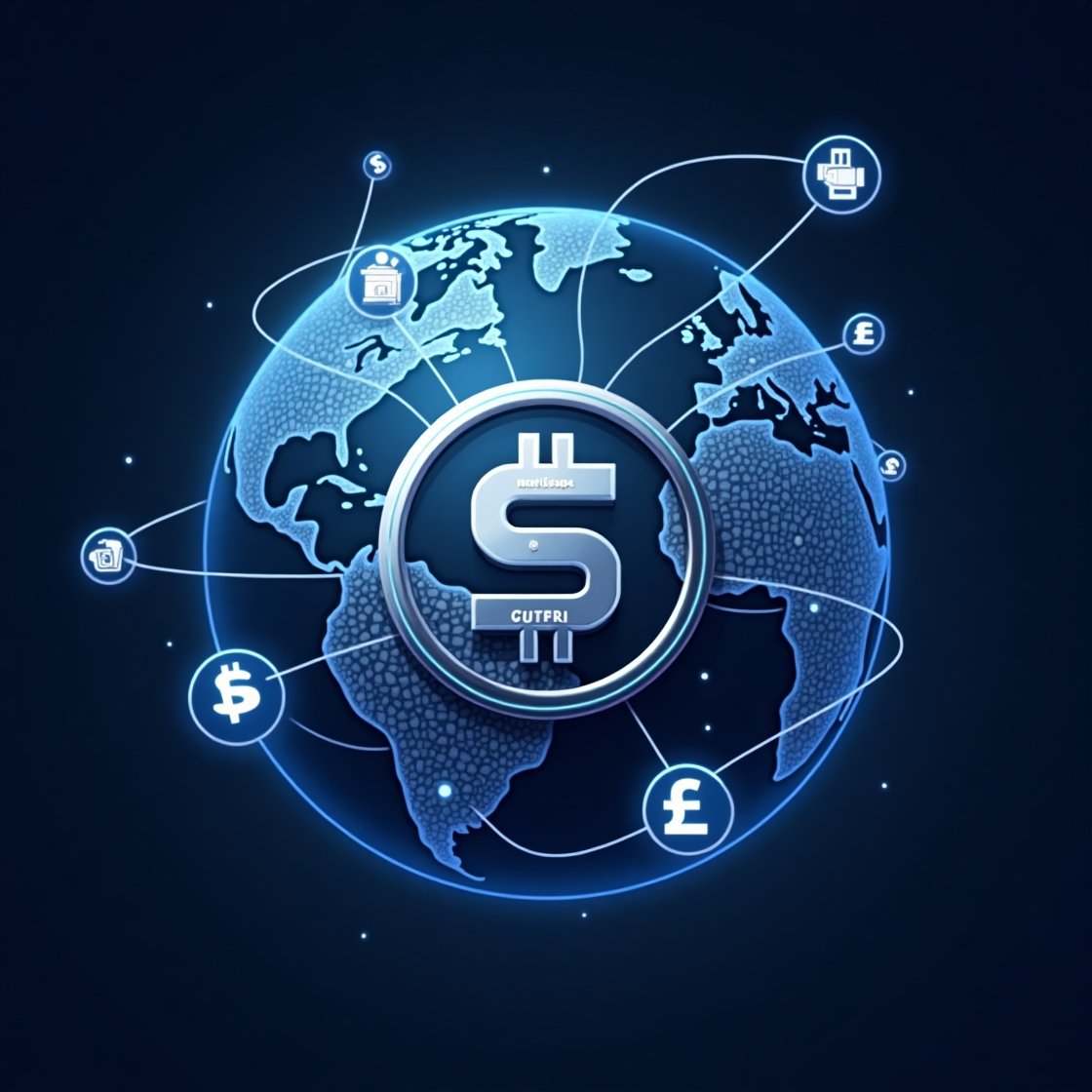
XRP, Solana, and Lightchain AI cryptocurrency comparison: In the fast-paced and ever-evolving world of digital assets, understanding the nuances between different cryptocurrencies is crucial. While Bitcoin and Ethereum often dominate headlines, a new generation of blockchain platforms like XRP, Solana, and the emerging Lightchain AI are pushing the boundaries of what’s possible. Each of these offers unique approaches to solving the challenges of scalability, speed, and utility in the decentralized space. But how do they stack up against each other, and what makes each one distinct?
XRP: The Veteran in Cross-Border Payments
XRP, the native digital asset of the XRP Ledger (XRPL), has been around since 2012, making it a veteran in the crypto space. Developed by Ripple Labs, XRP’s primary focus has always been on facilitating fast, low-cost, and reliable cross-border payments and remittances. Unlike many other cryptocurrencies, XRP is not mined; instead, all XRP tokens were pre-mined, and Ripple holds a significant portion of them, releasing them into circulation periodically. This centralized aspect has been a point of contention and discussion within the broader decentralized community.
Key characteristics of XRP and the XRPL include:
•Speed and Efficiency: Transactions on the XRPL are incredibly fast, often settling in 3-5 seconds, and cost a fraction of a cent. This makes it highly competitive with traditional banking systems for international transfers.
•Scalability: The XRPL can handle a high volume of transactions, reportedly up to 1,500 transactions per second (TPS), with potential for more.
•Use Case: Its main utility is as a bridge currency for financial institutions, allowing for quick and cheap conversion between different fiat currencies without the need for pre-funded nostro/vostro accounts.
•Consensus Mechanism: The XRPL uses a unique consensus mechanism called the XRP Ledger Consensus Protocol, which is a form of federated Byzantine agreement, rather than Proof-of-Work (like old Bitcoin) or Proof-of-Stake.
Despite its long-standing presence and clear use case, XRP has faced regulatory challenges, particularly with the U.S. Securities and Exchange Commission (SEC), which has impacted its market perception and adoption in certain regions.
Solana: The High-Performance Blockchain for Decentralized Applications
Solana emerged as a formidable contender in the blockchain space, particularly known for its incredibly high transaction speeds and scalability. Launched in 2020, Solana aims to provide a robust platform for decentralized applications (dApps) and crypto projects that require high throughput, such as DeFi (Decentralized Finance) and NFTs. Its rapid rise has been attributed to its innovative architecture, which addresses some of the scalability limitations faced by earlier blockchains.
Key features that set Solana apart include:
•Proof-of-History (PoH): This unique consensus mechanism, combined with Proof-of-Stake (PoS), allows Solana to achieve incredibly fast transaction finality and high throughput. PoH creates a historical record of events on the blockchain, enabling validators to process transactions more efficiently.
•Blazing Fast Transactions: Solana boasts theoretical transaction speeds of up to 65,000 TPS, making it one of the fastest blockchains available. This speed is crucial for applications that demand real-time interactions.
•Low Transaction Costs: Despite its high performance, transaction fees on Solana are remarkably low, often fractions of a cent, making it attractive for developers and users alike.
•Developer-Friendly Ecosystem: Solana has cultivated a growing ecosystem of developers and projects, offering robust tools and support for building dApps, smart contracts, and NFTs.
•Scalability Solutions: Beyond PoH, Solana incorporates several other innovations, such as Tower BFT (a PoH-optimized version of PBFT), Turbine (a block propagation protocol), and Gulf Stream (a mempool-less transaction forwarding protocol), all designed to enhance scalability.
While Solana has gained significant traction, it has also faced challenges, including occasional network outages and concerns about its degree of decentralization compared to some other blockchains. Nevertheless, its technological advancements and focus on performance have positioned it as a major player in the dApp and DeFi landscape.
Lightchain AI: Merging Blockchain with Artificial Intelligence
Lightchain AI (LCAI) represents a newer, more specialized entrant into the blockchain arena, aiming to seamlessly integrate artificial intelligence (AI) with blockchain technology. While XRP focuses on payments and Solana on high-performance dApps, Lightchain AI carves out a niche by leveraging AI to enhance decentralized applications, optimize network performance, and potentially create more intelligent and adaptive blockchain solutions. As a relatively new project, specific details about its long-term performance and widespread adoption are still emerging, but its vision is clear: to bring the power of AI to the decentralized world.
Key aspects of Lightchain AI often highlighted include:
•AI Integration: The core differentiator is its focus on embedding AI capabilities directly into the blockchain ecosystem. This could involve AI-powered smart contracts, optimized consensus mechanisms, or intelligent data analysis on-chain.
•Enhanced Decentralized Applications: By combining AI with dApps, Lightchain AI aims to enable more sophisticated and autonomous applications that can learn, adapt, and make decisions based on data.
•Scalability and Efficiency: Like Solana, Lightchain AI is designed with scalability in mind, recognizing the need for high throughput to support AI-driven applications and large datasets.
•Specific Use Cases: While broad, its AI focus suggests applications in areas like predictive analytics for DeFi, intelligent automation in supply chains, or AI-driven gaming experiences.
As an emerging project, Lightchain AI faces the challenge of building out its ecosystem, attracting developers, and proving its technological capabilities and real-world utility. Its success will largely depend on its ability to deliver on the promise of a truly intelligent and scalable blockchain platform.
The Grand Comparison: XRP vs. Solana vs. Lightchain AI
When we look at XRP, Solana, and Lightchain AI side-by-side, we see three distinct approaches to the future of blockchain:
| Feature | XRP (Ripple) | Solana | Lightchain AI |
| Primary Focus | Cross-border payments, remittances | High-performance dApps, DeFi, NFTs | AI integration with blockchain, intelligent dApps |
| Transaction Speed | Fast (3-5 seconds) | Extremely Fast (up to 65,000 TPS theoretical) | Designed for speed, specifics emerging |
| Scalability | High (1,500 TPS) | Very High | High, optimized for AI applications |
| Consensus | XRP Ledger Consensus Protocol (Federated Byzantine Agreement) | Proof-of-History + Proof-of-Stake | Specifics emerging, likely AI-optimized |
| Centralization | More centralized (Ripple Labs ownership) | More decentralized than XRP, but concerns exist | Specifics emerging |
| Maturity | Established (since 2012) | Relatively mature (since 2020) | Emerging project |
| Key Challenges | Regulatory hurdles (SEC lawsuit) | Network outages, decentralization concerns | Ecosystem building, proving utility |
XRP stands out for its established role in enterprise payments, offering a proven solution for fast and cheap international transfers. Its strength lies in its existing partnerships and focus on financial institutions.
Solana is the performance powerhouse, built for speed and scalability, making it ideal for applications that demand high throughput. Its rapidly growing ecosystem of dApps and NFTs highlights its potential as a foundational layer for the next generation of web3 applications.
Lightchain AI, while still in its early stages, represents the cutting edge of blockchain innovation by integrating artificial intelligence. Its success could pave the way for a new class of intelligent decentralized applications, but it has the significant task of proving its technology and building a robust community.
Choosing among these depends entirely on your needs and investment philosophy. If you’re interested in established payment solutions, XRP might appeal. If you prioritize speed and a vibrant dApp ecosystem, Solana could be your choice. If you’re an early adopter keen on the intersection of AI and blockchain, Lightchain AI offers an intriguing, albeit higher-risk, proposition.
Frequently Asked Questions (FAQs)
Q1: Is XRP a good investment? A1: XRP’s investment potential is often debated. While it offers fast and low-cost transactions, its price has been significantly impacted by regulatory uncertainties, particularly the SEC lawsuit. Its future performance depends heavily on the outcome of these legal battles and broader adoption by financial institutions.
Q2: Why is Solana so fast? A2: Solana achieves its high speed primarily through its innovative Proof-of-History (PoH) consensus mechanism, which creates a verifiable order of events, allowing for parallel processing of transactions. This, combined with other architectural optimizations, enables its high throughput.
Q3: What are the risks associated with Lightchain AI? A3: As an emerging project, Lightchain AI carries higher risks. These include the challenges of building a new blockchain ecosystem, attracting developers, proving the real-world utility and scalability of its AI integration, and competing with more established players in the market.
Q4: How do these cryptocurrencies differ in their decentralization? A4: XRP is often criticized for being more centralized due to Ripple Labs’ significant holdings and influence. Solana, while more decentralized than XRP, has faced some concerns regarding validator concentration and network outages. Lightchain AI’s decentralization will depend on its chosen consensus mechanism and validator distribution as it matures.
Q5: Can I build dApps on all three platforms? A5: Yes, in theory. Solana is specifically designed for dApp development and has a thriving ecosystem. The XRP Ledger also supports smart contracts and dApps, though its primary focus has been payments. Lightchain AI’s core mission is to enable AI-enhanced dApps, so it will certainly support them, but its developer tools and community are still under development.
Disclaimer: Not Financial Advice
This article is for informational purposes only and should not be considered financial advice. Investing in cryptocurrencies carries significant risks, including the potential loss of principal. The cryptocurrency market is highly volatile, and prices can fluctuate dramatically. Always conduct your own thorough research and consult with a qualified financial professional before making any investment decisions.
RELATED POSTS
View all


